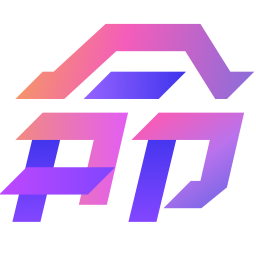Inochi2D is a library for realtime 2D puppet animation and the reference implementation of the Inochi2D Puppet standard.
Currently this library and the standard is in the prototype stage and is not recommended for production use.
If you want to try it out anyways you can clone this repo and run dub add-local (inochi2d folder) "1.0.0" then manually add it as a dependency in to dub.sdl/json.
2022-05-03.02-46-34.mp4
Video from Beta 0.7.2, LunaFoxgirlVT, model art by kpon
If you're a model rigger you may want to check out Inochi Creator, the official Inochi2D rigging app in development.
This repository is purely for the standard and is not useful if you're an end user.
Inochi2D contains all your parts (textures) in a tree of Node objects.
Nodes have their own individual purpose.
Parts contain the actual textures and vertex information of your model.
Each part is an individual texture and set of vertices.
PathDeforms deform its child Drawables based on its handles.
PathDeforms can deform multiple Drawables at once.
Masks are a Drawable which allow you to specify a shape.
That shape is used to mask Parts without being a texture itself.
More Node types to come...
The spec is still work in progress and is subject to change.
More details will be revealed once 1.0 of the spec is released.
Bootstrapping Inochi2D depends on the backing window managment library you are using.
Inochi2D can be boostrapped in GLFW (bindbc) with the following code
import std.stdio;
import std.getopt;
import std.json;
import std.string;
import inochi2d;
import bindbc.glfw;
import derelict.gles.gles2;
int main() {
loadGLFW();
glfwInit();
glfwWindowHint(GLFW_OPENGL_ES_API, GLFW_OPENGL_ANY_PROFILE);
glfwWindowHint(GLFW_CONTEXT_VERSION_MAJOR, 2);
glfwWindowHint(GLFW_CONTEXT_VERSION_MINOR, 0);
GLFWwindow* window = glfwCreateWindow(480, 800, "Inochi2D App".toStringz, null, null);
glfwMakeContextCurrent(window);
DerelictGLES2.load();
// A timing function that returns the current applications runtime in seconds and milliseconds is needed
inInit(cast(double function())glfwGetTime);
// Get the viewport size, which is the size of the scene
int sceneWidth, sceneHeight;
// It is highly recommended to change the viewport with
// inSetViewport to match the viewport you want, otherwise it'll be 640x480
inSetViewport(480, 800);
inGetViewport(sceneWidth, sceneHeight);
// Also many vtuber textures are pretty big so let's zoom out a bit.
inGetCamera().scale = vec2(0.2);
inGetCamera().position = vec2(0, 1000);
// NOTE: If you want to implement camera switching (for eg camera presets) use
// inSetCamera
// NOTE: Loading API WIP, subject to change
// You can get example models at https://github.com/Inochi2D/example-models
Puppet myPuppet = inLoadPuppet("Aka.inx");
// Example of how to retreive and set puppet parameters at runtime
int[string] name_to_index;
int index = 0;
foreach (ref p; myPuppet.parameters) {
name_to_index[p.name] = index++;
writeln(p.name);
writeln(p.isVec2);
}
myPuppet.parameters[name_to_index["Head:: Roll"]].value = vec2(-1, 0);
while(!glfwWindowShouldClose(window)) {
// NOTE: Inochi2D does not itself clear the main framebuffer
// you have to do that your self.
glClear(GL_COLOR_BUFFER_BIT);
// Run inUpdate first
// This updates various submodules and time managment for animation
inUpdate();
// Imagine there's a lot of rendering code here
// Maybe even some game logic or something
// Begins drawing in to the Inochi2D scene
// NOTE: You *need* to do this otherwise rendering may break
inBeginScene();
// Draw and update myPuppet.
// Convention for using Inochi2D in D is to put everything
// in a scene block one indent in.
myPuppet.update();
myPuppet.draw();
// Ends drawing in to the Inochi2D scene.
inEndScene();
// Draw the scene, background is transparent
inDrawScene(vec4(0, 0, sceneWidth, sceneHeight));
// Do the buffer swapping and event polling last
glfwSwapBuffers(window);
glfwPollEvents();
}
return 0;
}The version on dub is not always up to date with the newest features, to use inochi2d from the repo either:
- Add
~masteras your version in yourdub.selections.jsonfile after having added inochi2d as a dependency. - Clone this repo and run
dub add-local (inochi2d folder) "1.0.0"to add inochi2d as a local package. You can then addinochi2das a dependency.
The Inochi2D logo was designed by James Daniel


